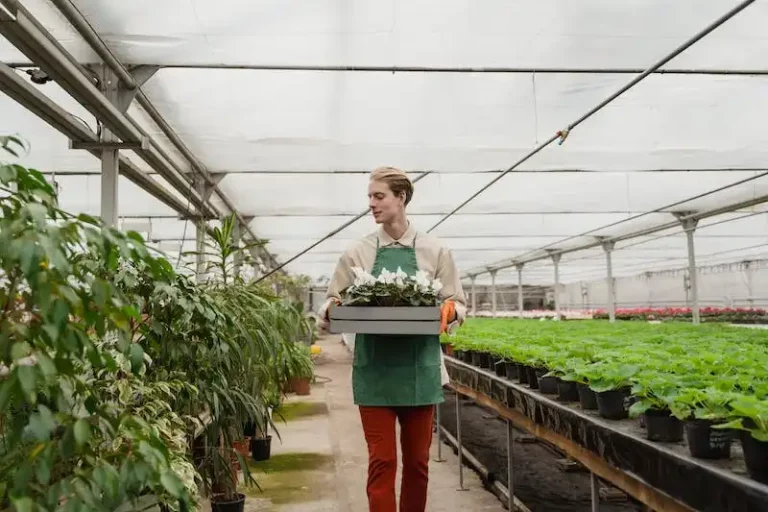When renovating your garden, there may come a time when you need to remove existing plants. This can be a challenging task, especially if you have a large garden or if the plants are invasive. In this article, we will discuss three major ways to remove plants from your garden.
The first method is manual removal. This works best for small or specific areas, such as removing perennials or shrubs. You can use a shovel or garden fork to dig out the plants, taking care to remove as much of the roots as possible. If the plant is particularly stubborn, you may need to use a hand saw or pruning shears to chop it up before removing.
The second method is adopting a more mechanical approach. This includes using tools like a weed whacker or brush cutter to cut down the plants. Once they are cut down, you can remove the remaining roots or dig up the plants if needed. Be sure to wear proper protective gear while using these tools, and be mindful of the dirt and debris that may be kicked up.
The third method is natural mulching. This is a more sustainable approach that allows you to dispose of the plants in an eco-friendly way. Instead of removing the plants, you can chop them up into smaller pieces and spread them over your garden as mulch. This not only helps improve the soil quality but also reduces the effort of removing the plants and the need for disposing of them.
Regardless of which method you choose, it is important to thoroughly prepare the area and handle the plants with care. Invasive plants, in particular, can be harmful to the environment if not properly managed. Be sure to research and consider the specific nature of the plants you are removing, as well as any warning signs you may experience during the process.
In conclusion, removing existing plants in the garden can be a challenging task. However, by selecting the right method and taking the necessary precautions, you can successfully renovate your garden and create a beautiful and healthy space for plants to thrive.
How to Get Rid of Invasive Plants
Removing invasive plants from your garden can be a challenging but necessary task. These plants can outcompete other plants, invade surrounding areas, and disrupt the ecosystem. Here are some methods for effectively getting rid of invasive plants:
1. Manual Removal
For smaller areas or individual plants, manual removal is a simple and effective method. You can use a hoe or shovel to dig out the plant, making sure to remove as much of the root system as possible. Be cautious while working near the plant to avoid injury.
2. Mechanical Removal
For larger areas or dense patches of invasive plants, mechanical removal may be required. This involves using heavy machinery or tools like a brush cutter or weed whacker to cut down the plants. After cutting, the plants can be removed and disposed of properly.
3. Chemical Control
Invasive plants may require the application of herbicides or other chemical controls. It’s important to follow the manufacturer’s instructions and safety guidelines when using these products. Be aware that some herbicides may have adverse effects on non-target plants and the environment.
4. Professional Assistance
If the invasive plants in your garden are too large or extensive to handle on your own, it may be necessary to seek professional help. Professional landscapers or arborists can provide expertise in removing and managing invasive plants safely and effectively.
5. Disposal Methods
When removing invasive plants, it’s important to dispose of them properly to prevent re-establishment. Do not compost invasive plants, as they may survive and spread when compost is used. Instead, place them in a garbage bag or bin for disposal in a landfill.
6. Preventing Reinfestation
To prevent the reinfestation of invasive plants, it’s essential to monitor the area regularly and remove any new growth promptly. Additionally, maintaining a healthy garden with native plants that are well-suited to the environment will help prevent the establishment of invasive species.
Ensuring the removal of invasive plants from your garden requires effort and dedication, but it is necessary to protect the health and biodiversity of your outdoor space. Remember to research and identify the invasive plants in your area and develop a strategy to remove them effectively.
Warning
Removing existing plants from your garden during a renovation project requires caution and careful handling. There are several important considerations to keep in mind to ensure a safe and effective removal process.
1. Invasive plants: Before starting the removal process, familiarize yourself with the types of plants in your garden. Some plants may be invasive and require special care to prevent spreading. Research the plants to determine the most effective removal methods.
2. Safety hazards: While removing plants, be aware of any potential safety hazards. Some plants may have thorns or prickly leaves that can cause injury. Wear protective clothing and gloves to avoid direct contact with these hazards.
3. Mechanical removal: For large plants, mechanical removal methods such as using a shovel or a hoe may be necessary. This requires physical strength and proper technique to avoid injury. Follow online tutorials or seek advice from local experts on how to safely remove large plants.
4. Manual removal: Smaller plants can often be removed by hand, but be cautious when pulling them out. Ensure that you extract the entire root system to prevent regrowth. If necessary, use a trowel or a small shovel to help loosen the soil around the plant.
5. Disposal: Proper disposal is crucial to prevent the spread of diseases and pests. Dispose of the removed plants in a designated area or compost them if they are disease-free. If invasive plants are present, contact local authorities or follow regulations for their disposal.
Remember to always check with the author of the renovation instructions or seek advice from local garden experts before removing any plants. Each garden is unique, and the specific needs and challenges may vary.
Overall, removal of existing plants is a major step in the renovation process. Take it seriously and handle each plant with care to ensure the success of your garden makeover.
Key takeaway: Removing existing plants from the garden requires caution and careful handling to avoid injuries and prevent the spread of invasive species. Follow proper techniques for mechanical and manual removal, and dispose of the plants in a responsible manner.
Manual or Mechanical Removal
If you have old, overgrown plants or shrubs that need to be removed, there are two main ways to go about it: manual removal or mechanical removal. The method you choose will depend on your experience, the size of the shrub or plant, and the resources you have available.
The first option is manual removal, which is a simple and straightforward process. It includes using a shovel or other hand tools to dig up the rooted shrub or plant from the dirt. This method always requires some gardening experience and can be time-consuming, especially for larger shrubs or plants.
Once you have dug up the shrub, you will need to dispose of it properly. Some local disposal services may require you to bag the shrub and take it to a specific location, such as a disposal site or a composting facility. Others may offer a pick-up service, where you can arrange for a truck to come and collect the shrub.
The second option is mechanical removal, which involves using machinery to get rid of the shrub. This method is faster and more efficient than manual removal, especially for larger shrubs or plants. There are different types of mechanical removal equipment available, such as stump grinders or excavators, that can be rented or hired for this specific task.
After you have removed the shrub using mechanical means, you will still need to dispose of it properly. The process is similar to manual removal, where you may need to bag the shrub and take it to a local disposal site or arrange for a pick-up service.
Regardless of the method you choose, there are a few important considerations to keep in mind. First, always prepare for the removal process by wearing proper safety gear, such as gloves and safety goggles, to protect yourself from any hazards. Second, be mindful of any aftercare that may be required for the area where the shrub was removed. This can include mulching or replanting to prevent any weeds from coming back.
In conclusion, when it comes to removing existing plants in your garden, there are three main ways: manual removal, mechanical removal, or hiring a professional gardener. Each method has its own advantages and disadvantages, so choose the one that best suits your needs and resources. And always remember proper disposal and aftercare practices to ensure a clean and healthy garden.
The takeaway message is that removing shrubs and plants from your garden can sometimes be a major task, but with the right tools and techniques, it can be accomplished safely and effectively. Whether you choose manual or mechanical removal, it’s important to properly dispose of the plants and ensure the area is prepared for future gardening activities.
For more information and visual guidance on removing shrubs and plants from your garden, check out our gallery to see step-by-step instructions and helpful tips.




